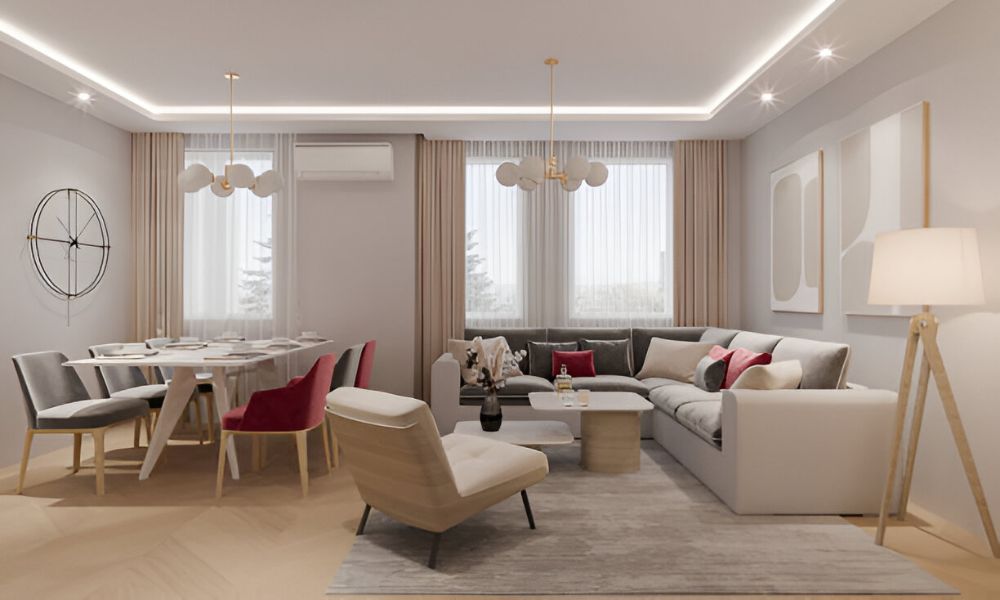The lights in my first living room were all wrong. Some spots were dark, others way too bright. I didn’t feel cozy or relaxed. I just felt annoyed. That mess started my obsession with lighting. I didn’t know how many recessed lighting per square foot was right. I just guessed. Big mistake.
Over the years, I’ve helped others avoid the same trap. The secret? Use the right number of lights in the right spots. It’s not guesswork—it’s simple math.
In this guide, I’ll show you how to plan your lighting. We’ll cover spacing, light coverage, and how to get your kitchen setup just right. You’ll learn step by step, in plain language. No fluff, no stress.
What Is Recessed Lighting? (And Why It’s Awesome)
Recessed lighting is light that sits inside your ceiling instead of hanging down. It gives a smooth, clean look, like lighting with an invisibility cloak. You get brightness without the clutter. That’s what won me over years ago during my first kitchen update.
One of the things I love most? It saves room. No bulky lamps. No dusty fixtures. Just clean lines and a modern vibe. It’s like makeup for your ceiling—subtle, but it makes everything pop.
These lights work almost anywhere. I’ve used them in living rooms for a cozy glow. In kitchens, they help light up prep areas. Bathrooms? Perfect for a spa-like feel. And in long hallways, they stretch light evenly so it doesn’t feel like walking through a tunnel.
How Many Recessed Lighting Per Square Foot – The Easy Formula
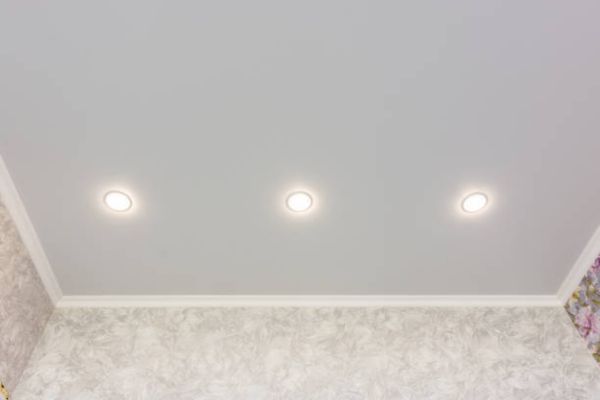
Let’s keep this simple. You don’t need to guess or follow random advice. There’s a clear way to know how many lights your room needs.
Start by measuring your room. Multiply the length by the width. That gives you the total square feet. A 10 by 12 room is 120 square feet.
Now multiply that number by how bright the space should be.
- For soft areas like bedrooms: use 20 lumens per square foot
For bright spaces like kitchens: use 30–40 lumens per square foot
Let’s say your room is 120 sq ft. You want 30 lumens per sq ft.
120 × 30 = 3,600 lumens needed
Now divide that by how bright your light is. Most LED recessed lights give around 600 lumens.
3,600 ÷ 600 = 6 lights
If you’re looking for the best recessed lighting for your bathroom, be sure to check out our full guide to find the perfect fit for your space.
The Golden Rule of Recessed Lighting Spacing
Even with the right number of lights, bad spacing can ruin the look. Lights placed too close or too far can leave shadows or make a room feel uneven.
So, with an 8-foot ceiling, space your lights about 4 feet apart. This keeps light even across the room. No bright spots. No dark patches.
Now check the edges. Always leave about 2 to 3 feet between the wall and the first light. This keeps corners lit without casting harsh side shadows.
Try to avoid putting lights in a perfect grid. Focus on how the room feels. Follow furniture lines, walkways, or key areas like tables and counters.
Mistakes I see often? Lights packed too tight. Or placed right above heads in seating areas. It feels like you’re under a spotlight—not relaxing at all.
Kitchen Recessed Lighting Placement Tips
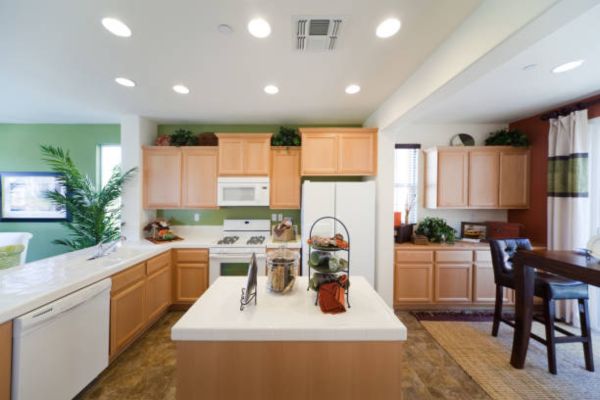
The kitchen is where light matters most. You chop, stir, wash, and move fast. Every inch needs clear, bright light. That’s why task lighting is key here.
Start with the work zones. Place lights right above counters and prep areas. Over the sink, use a direct light to stop shadows from your body or faucet. For islands, space lights evenly to light the full surface.
Keep your spacing tight, but not crowded. Aim for 3 to 4 feet between lights. This keeps the brightness smooth without harsh beams or glares.
Use warm-white bulbs to keep the space cozy but still clear. Avoid cool light that feels too harsh for family areas. And never skip the dimmer—it lets you go from meal prep to midnight snack without blinding light.
Choosing the Right Type of Recessed Light for Each Room
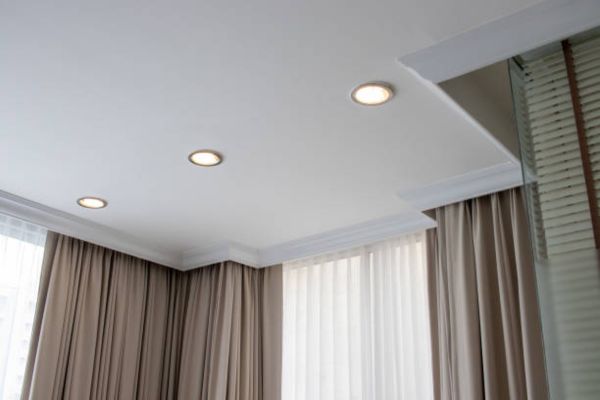
Not all recessed lights are the same. What works in a hallway may not feel right in your bedroom. The trim, beam angle, and bulb color all shape how your room feels.
Trim style affects both look and light. Baffle trims reduce glare and are great for living rooms. Reflector trims give more shine, perfect for kitchens. Want a soft, subtle glow? Go with a diffused trim for bedrooms or hallways.
Light color matters too. Warm light (2700K–3000K) feels soft and relaxing. Use it in bedrooms and living areas. Cool light (4000K–5000K) feels crisp and alert. It works best in kitchens, laundry rooms, and home offices.
Don’t forget about recessed light coverage. Large rooms need wide beams and fewer shadows. Smaller spots—like a reading corner—need focused, tight beams. You can even mix beam types in one room for a layered feel.
Pro Tips from a Home Lighting Nerd (That’s Me )
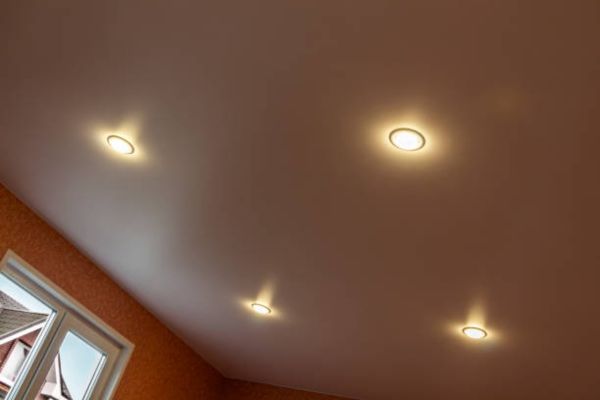
Let me say this loud and clear: dimmers are magic. They let you change the mood with one touch. Bright for chopping veggies. Soft for wine and chats. One switch does it all.
Before you drill a single hole, grab some painter’s tape. Mark out where each light will go. Stand in the space. Look around. You’ll catch things on tape that the sketch didn’t show.
Also, don’t feel stuck with just one type of light. I mix recessed lights with pendants, strips, and even lamps. It adds depth. Layers give rooms life—like a soundtrack with highs, mids, and lows.
Common Questions ( FAQ)
How far apart should recessed lights be?
A good rule is to divide your ceiling height by two. An 8-foot ceiling needs lights about 4 feet apart. This helps keep your recessed lighting spacing smooth and balanced.
How many recessed lights in a 12×12 room?
Start with the formula: 12 × 12 = 144 sq ft. Multiply by 20–30 lumens per foot. Then divide by the lumens your bulb gives. Most people use four to six lights in that size room.
Can I mix recessed and pendant lights in the kitchen?
Yes, and it works beautifully. Use recessed lights for full coverage and pendants to highlight areas like the island or dining table.
Conclusion
Good lighting does more than help you see—it shapes how your home feels. It’s not about flooding every corner with brightness. It’s about making each space feel just right.
You now know how to plan it, space it, and choose the right type for every room. No guessing. Just simple steps that work.

